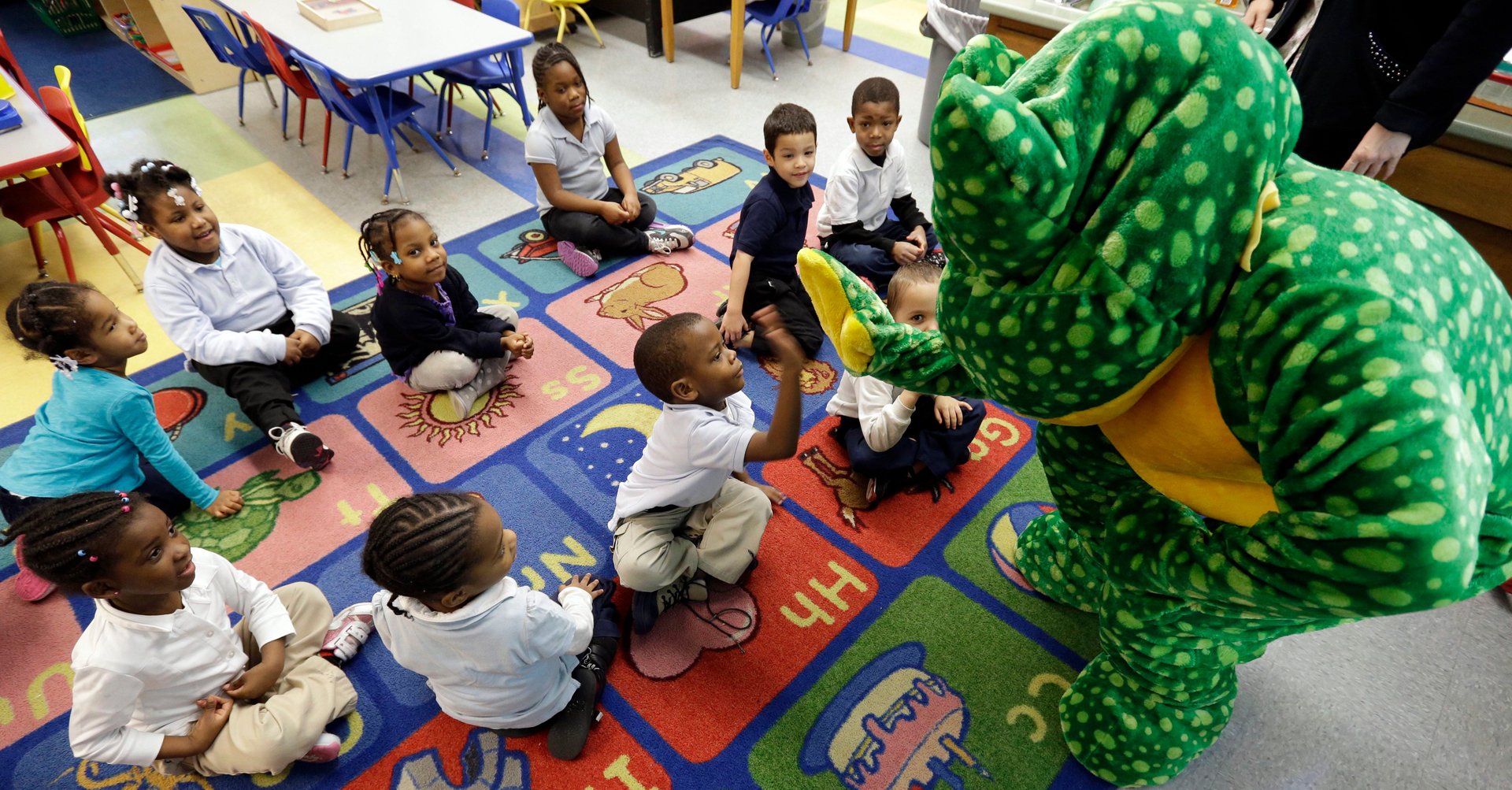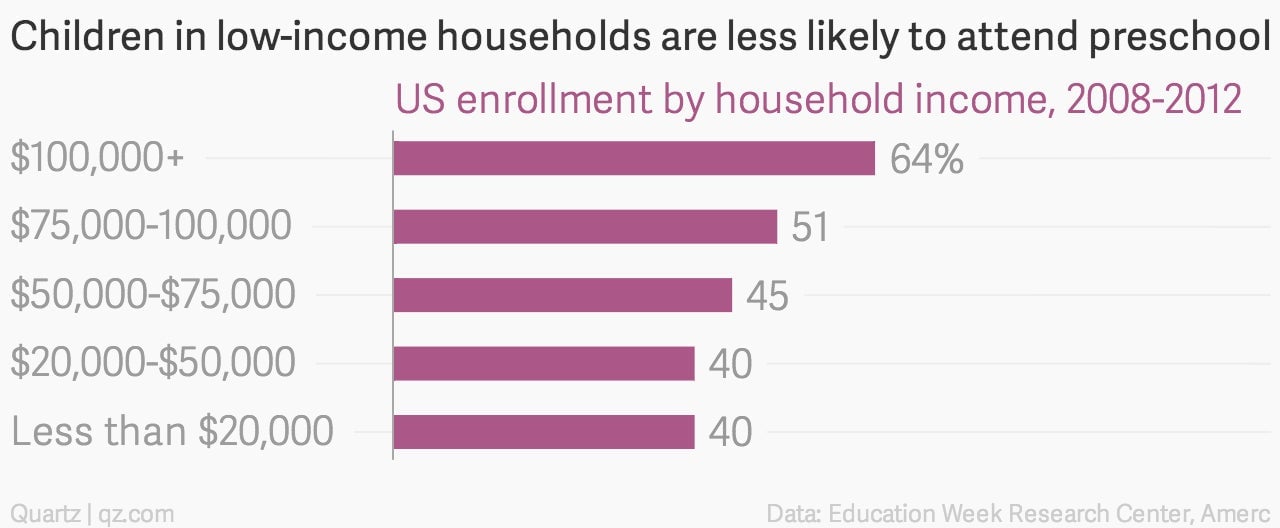Just how wide is the preschool attendance gap between kids from the richest US households and the poorest?
In US households that earn $100,000 or more per year, 64% of children age three or four attend preschool. In US households making less than $50,000, only 40% of kids are getting education before kindergarten. That’s a 24 percentage-point difference.


In US households that earn $100,000 or more per year, 64% of children age three or four attend preschool. In US households making less than $50,000, only 40% of kids are getting education before kindergarten. That’s a 24 percentage-point difference.

A few caveats to the data, which come from the Quality Counts report (pdf) out today from the Education Week Research Center: the figures are based on an analysis of American Community Survey data from 2008 to 2012, which was self-reported. So the data were collected from families, not school districts. Also, the data were collected in a period that included a severe recession, which may have influenced outcomes—for instance, higher unemployment may have kept some parents home or altered some households’ financial circumstances in ways that affected their decisions about preschool enrollment or childcare in general.
One reason that children in low-income households are less likely to attend preschool may be that early education is much more privatized than other grades, says Christopher Swanson, the vice president of Editorial Projects in Education, which publishes Education Week and the Quality Counts report.

Early education has become a hot topic in the US in recent years, emerging as a buzzword for President Obama and dominating the early part of New York City mayor Bill de Blasio’s term, when he made universal prekindergarten the centerpiece of his agenda. (The Quality Counts report does not differentiate between preschool and prekindergarten).
It is well established that children from high income families fare better in life, scoring higher on standardized tests and getting more college degrees and thus more and higher-paying jobs. People agree less, however, on the long-term effects of preschool, with opponents of state- and federally-funded preschool programs citing the lack of large-scale data proving its benefits. Long-term studies, which are few and limited in scope, do suggest that differences in academic achievement tend to fade out, but that children who attend preschool see a long-lasting impact in the form of school completion, higher earnings, and lower incarceration rates compared with their counterparts.